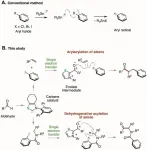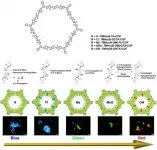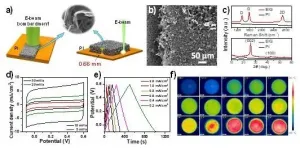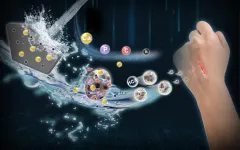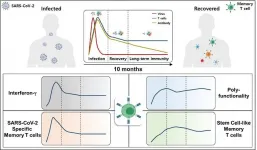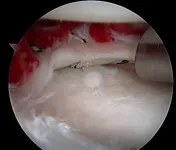More and more older people suffer a traumatic brain injury due to falls
2021-07-06
(Press-News.org) The study is the first on epidemiology and causes of traumatic brain injury in over 20 years. The research team reports in the journal BMJ Open of 4 June 2021.
Falling and cycling without a helmet are common causes
From a minor fall on a bicycle to a serious road traffic accident: The causes of a traumatic brain injury are manifold. About 90 percent of the approximately 270,000 cases per year are classified as mild, ten percent as moderate or severe. Current findings show that traumatic brain injury is increasing in the age group of over-65s. The research team at BG Kliniken in Bochum, Hamburg, Berlin, Halle, Frankfurt, Ludwigshafen and Murnau found that there has been a shift in the age group most frequently affected and that there is a discernible correlation between the severity of a traumatic brain injury, age and cause.
The study shows that the most frequent causes of traumatic brain injury are falls and no longer road traffic accidents. There has also been a shift with regard to road traffic accidents: The largest group here is no longer car occupants, but cyclists without helmets.
"We are registering a clear shift in the majority of the affected age group towards the older generation. This phenomenon can be observed in almost all industrialised countries," explains Professor Peter Schwenkreis, senior physician at the Neurological Clinic at Bergmannsheil. A link with the age of those affected is also discernible. Falls are the most common cause, especially among older women and men. "Older people are significantly more prone to falls and thus suffer a traumatic brain injury more quickly than other age groups. In addition, the severity of the injury is higher in these patients", Schwenkreis specifies. "This also explains why we are seeing an increase in deaths caused by such an injury in this age group."
Study with over 3,500 participants
For the study, a neuroscientific research group of the BG Kliniken observed and evaluated the development, treatment and impact for patients with traumatic brain injury. A total of 3,514 patients were included in the study. All of them were treated at one of the participating BG Kliniken between 1 October 2014 and 30 September 2015. The prerequisite was that the medical care had taken place within the first 24 hours after suffering the traumatic brain injury.
The results were collected using two different methods: Evaluation of documentation forms from initial care to rehabilitation on the one hand, and standardised telephone interviews with the affected persons three and twelve months after they suffered the trauma on the other hand. A study of this magnitude on the epidemiology of traumatic brain injury has not been published in Germany since 2000/2001.
Simple measures can have a big impact
As moderate to severe traumatic brain injuries occur more frequently in older people, the research group identifies a specific need for more prevention work here. "Training measures for safe walking, training in the use of walking aids or redesigning the home by removing tripping hazards are conceivable. As simple as these measures sound, they can prevent serious injuries", says Peter Schwenkreis. "The advances in passenger protection in cars have had a clearly demonstrable effect", he explains further. "Now it is important to implement the protection of pedestrians and cyclists as part of the emerging shift in mobility."
Traumatic brain injury
A traumatic brain injury is any injury to the skull, with or without fracture, that involves damage to the brain. Just like the causes, the symptoms can also be very diverse. They range from headaches, dizziness and lightheadedness to amnesia or impaired consciousness. However, even minor injuries to the skull can cause bleeding or swelling the brain, which is why a traumatic brain injury should be assessed immediately after an accident.
INFORMATION:
ELSE PRESS RELEASES FROM THIS DATE:
2021-07-06
[Background]
Aryl halides*1) with a benzene ring directly bonded to a halogen atom are readily available and chemically stable, so they are used as a source of benzene rings in organic synthesis. For example, a chemical reaction that generates a highly reactive aryl radical*2) from an aryl halide using a toxic tin compound has long been known as a method for supplying a benzene ring (Figure 1A). In recent years, chemical reactions have been developed, in which an aryl halide is reduced using a metal catalyst or a photocatalyst*3) followed by cleavage of the bond between the benzene ring and the halogen atom to generate ...
2021-07-06
Together with their multifaceted action mechanisms, activation-induced cytidine deaminase (AID) and so-called APOBEC proteins are important factors in the body's immune response and offer fast and effective protection against a large number of DNA and RNA viruses. The task of AID is to strengthen the human immune response, while APOBECs are able to block the virus. A MedUni Vienna research team comprising Anastasia Meshcheryakova, Diana Mechtcheriakova and Peter Pietschmann from the Institute of Pathophysiology and Allergy Research has now addressed the potential interrelations between AID/APOBECs and the SARS-CoV-2 virus, ...
2021-07-06
Ishikawa, Japan - Many researchers in the field of materials science constantly seek novel and versatile platforms that can be used to tailor materials to match their intended use. One example of this are covalent organic frameworks (COFs), an emerging class of crystalline porous polymers with a favorable set of fundamental properties, namely crystallinity, stability, and porosity. This combination makes them, in theory, adjustable to many modern applications. Unfortunately, owing to the way COFs are usually obtained, these properties are not very pronounced, resulting in unstable, low-crystallinity solids with limited porosity.
At the Japan Advanced Institute of ...
2021-07-06
Recently, Prof. WANG Zhenyang's research group from the Hefei Institutes of Physical Science (HFIPS) of the Chinese Academy of Sciences (CAS) has prepared macroscopic thick three-dimensional (3D) porous graphene films.
Using high-energy electron beam as the energy source and taking advantages of high kinetic energy and low reflection characteristics of e-beam, the researchers directly induced polyimide precursor into a 3D porous graphene crystal film with a thickness of up to 0.66 mm. Related research results were published in the journal Carbon.
Graphene has been proved ...
2021-07-06
A new nanotechnology development by an international research team led by Tel Aviv University researchers will make it possible to generate electric currents and voltage within the human body through the activation of various organs (mechanical force). The researchers explain that the development involves a new and very strong biological material, similar to collagen, which is non-toxic and causes no harm to the body's tissues. The researchers believe that this new nanotechnology has many potential applications in medicine, including harvesting clean energy to operate devices implanted ...
2021-07-06
Recently, with the help of a steady-state strong magnetic field experimental device, scientists constructed nano-scale borate bioactive glass (Nano-HCA@BG), which can effectively reduce the biological toxicity of borate bioglass, improve the biocompatibility of the glass, and promote the effect of borate bioglass on skin repair.
Prof. WANG Junfeng from the Hefei Institutes of Physical Science (HFIPS) of the Chinese Academy of Sciences (CAS), collaborating with Prof. ZHANG Teng from Fuzhou University in this study, said, "it is expected to become the next generation of skin wound repair dressings." Related research was published in Chemical Engineering Journal.
Borate bioglass is a glass with boron element (B) as the glass network matrix. With good dopability and degradability, it ...
2021-07-06
Sleep deprivation - from lifestyle choices, pandemic stress, or late-night computer study - can quickly lead to loss of energy and function during the day and even feelings of anger and depression, an Australian sleep institute study has shown.
The study, led by Flinders University, asked 34 health teenagers (20 males) aged between 15 and 17 to spent 10 days and nine nights in a specially designed sleep centre.
They were allocated to one of three sleep 'doses' for five consecutive nights- from five hours, 7.5 hours, or 10 hours in bed per night - with two baseline and two 'recovery' nights of up to 10 hours' time in bed.
Their mood was measured every three hours after waking up to assess responses to feelings such as 'depressed', 'afraid', 'angry', 'confused', ...
2021-07-06
Wetland, forest, and ocean are the three largest ecosystems in the world. Although the area of wetland ecosystem accounts for only 4-6% of the total land area, the carbon reserves of wetland ecosystem accounts for 12-24% of the global land carbon reserves. Under the background of global climate change, the research on carbon sequestration of wetland has become an important subject of global carbon cycle research.
The area of marshes in China ranks third in the world, and herbaceous marsh is the most widely distributed among all the types of marshes. As an important quality parameter of marsh ecosystem, aboveground biomass of vegetation is a crucial index estimating the carbon storage of marsh vegetation, and the basis for studying ...
2021-07-06
A KAIST immunology research team found that most convalescent patients of COVID-19 develop and maintain T cell memory for over 10 months regardless of the severity of their symptoms. In addition, memory T cells proliferate rapidly after encountering their cognate antigen and accomplish their multifunctional roles. This study provides new insights for effective vaccine strategies against COVID-19, considering the self-renewal capacity and multipotency of memory T cells.
COVID-19 is a disease caused by severe acute respiratory syndrome coronavirus-2 (SARS-CoV-2) infection. When patients recover from COVID-19, SARS-CoV-2-specific adaptive immune memory is developed. The adaptive immune system consists ...
2021-07-06
While this isn't the fountain of youth, scientists may have improved healing in our joints - even in areas that become weaker as we grow older. The meniscus is a durable, yet flexible tissue found in joints like our wrist and knees that helps them absorb shock during movement. Occasionally tears can occur in the meniscus due an awkward movement or structural weakness from old age. When we are young, there is plenty of blood flowing to this area allowing for quick healing, but as we get older, the meniscus receives less and less blood - with the inner most area becoming ...
LAST 30 PRESS RELEASES:
[Press-News.org] More and more older people suffer a traumatic brain injury due to falls
